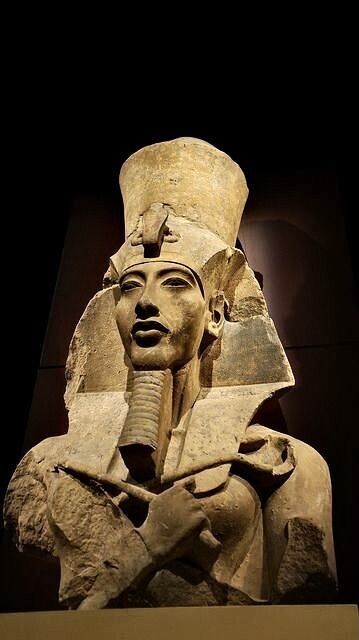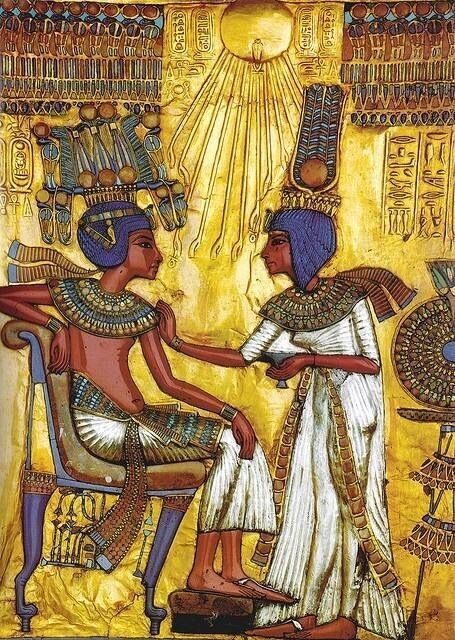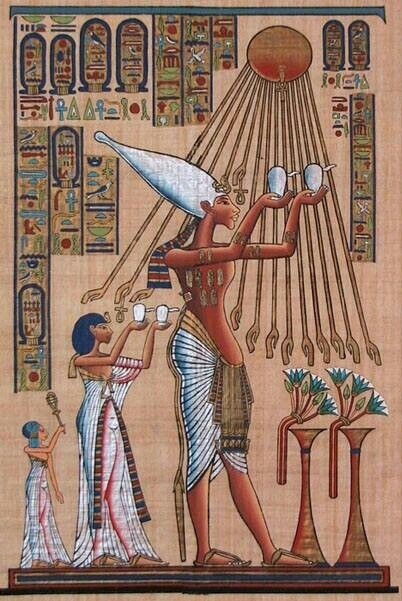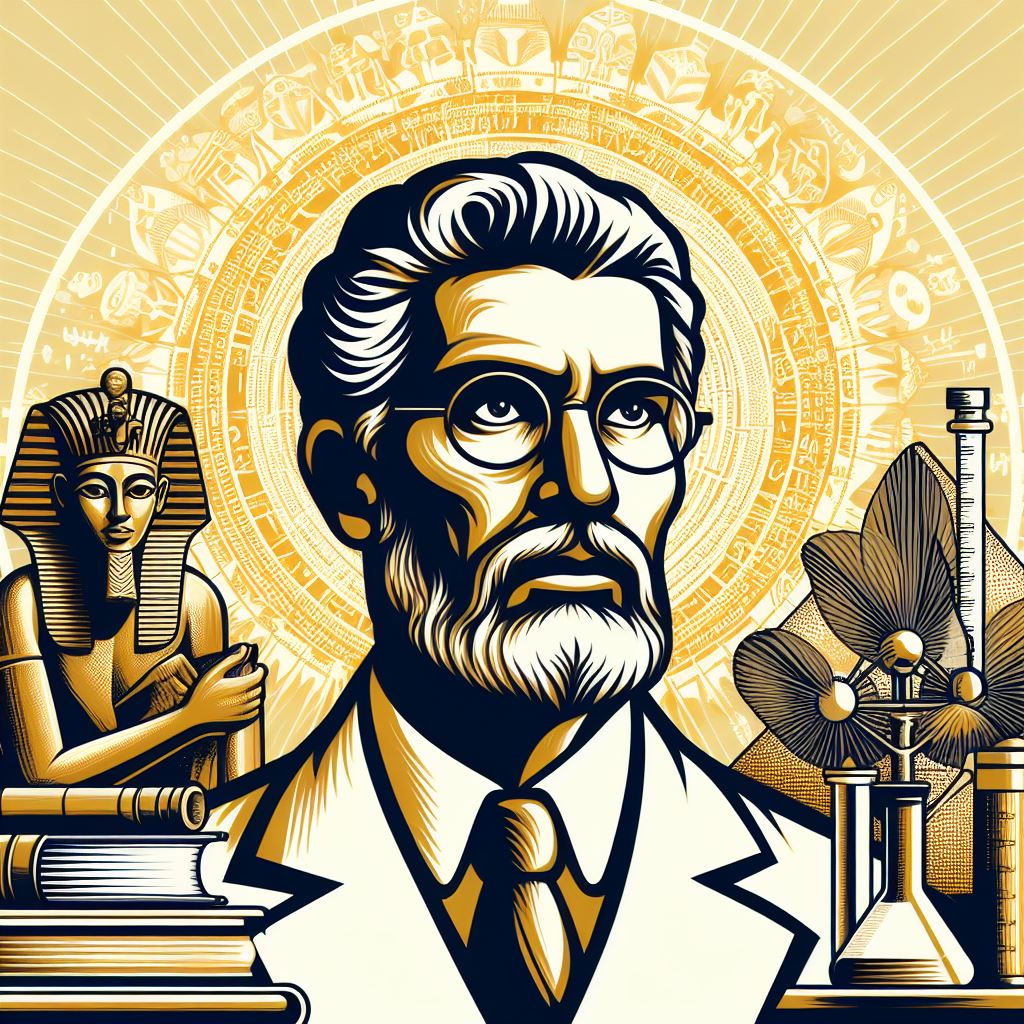Amarna Style marks a unique chapter in the grand narrative of Ancient Egyptian culture. Emerging during the reign of pharaoh Akhenaten, it was nothing short of a revolution in art and religious expression. The period broke away from the rigidity of previous artistic norms and ushered in a new, expressive form.
Pharaoh Akhenaten, formerly known as Amenhotep IV, wasn’t content with just a religious transformation through his controversial monotheistic worship of Aten. He wanted to shake things up, and that extended right into how art was done. Forget the norm—he was all about depicting the real, the raw, the genuine.

And then there was queen Nefertiti, a key player in this artistic revolution. Often showcasing her beauty and grace in these artworks, she wasn’t just a muse but embodied the amalgamation of divine and human love and power. Art from this period often depicted the royal family in unprecedented scenes of intimacy, praising Akhenaten’s close familial ties.
Not everyone was thrilled with these changes, though. Traditionalists found the shifts jarring, and the artistic experiments were a shock to the system. However, for those involved in the movement, the Amarna Style was a chance to express reality and divine connectivity in art, something that Ancient Egypt was witnessing for the very first and potentially only time.
Breaking Traditional Barriers: Innovations in Amarna Art
Amarna Art was all about challenging the status quo. While Egyptian art traditionally had a knack for uniformity and symbolism, this period shook things up with a bold sense of realism and naturalism. You didn’t see those rigid, stoic figures any more. The faces, the bodies—they were alive with expressions and emotions.
One of the standout features was the exaggerated proportions. Forget the previous obsession with perfect symmetry; here, human figures were shown with elongated necks, exaggerated limbs, and even some rounded forms that were both artistic and a nod to Akhenaten’s own radical image. It kinda signaled the pharaoh’s break from the past.

Then there was the intimate portrayal of the royal family. Instead of static, ceremonial representations, the art showed moments of affection and tenderness, something that took viewers right into the personal lives of the royal family. A father doting over his daughters, a queen beside her king—it humanized the figures.
These innovations weren’t just about stylistic preference. They conveyed a deeper message, aligning closely with Akhenaten’s efforts to promote his new religious ideology. By embracing naturalism and realism, it was almost like they were trying to depict the world as it truly existed, rather than how they wished it to be.
Decoding the Symbolism: Religion and Iconography in Amarna Art
Amarna Art was deeply intertwined with the religious upheaval Akhenaten initiated. This wasn’t just art for art’s sake; it was a visual manifesto of the new monotheistic belief centered around Aten, the sun disk. Akhenaten aimed to capture not only the power but also the serenity and life-giving warmth of the solar deity.
In many ways, the art of this period served as a bridge between the divine and mortal realms. Akhenaten and his family were frequently depicted in close association with Aten’s rays, symbolizing divine blessings touching the earthly. It was as if the art itself was reaching out to connect with the celestial. Such iconography reinforced Akhenaten’s divine rule, a blend of god and man walking the Earth.
The symbols and styles became not just artistic expressions but religious tools, carrying potent theological messages. The radical departure from traditional Egyptian mythology mirrored Akhenaten’s drastic religious shift, pushing an ideology where Aten was the sole focus.

Drawing viewers into a narrative filled with mythical undertones, this art intertwined gods and royalty seamlessly, suggesting a society in flux, engaged in a dialogue about divine truth. This approach ensured that every piece was not just a depiction of life but a statement of faith.
Interpreting the symbolism in Amarna Art takes us beyond the image to the stories being told, offering insights into an era where art served as a powerful conduit for new ideas and spiritual beliefs.
Legacy and Influence: The Enduring Impact of Amarna Art
Amarna Art didn’t just fizzle out after Akhenaten’s reign; it left a lasting mark on the artistic and cultural landscape. Even though the following pharaohs tried to erase this radical chapter from history, the artworks survived in fragments that later intrigued historians and artists alike.
Interest in Amarna Art surged with archaeological discoveries in the late 19th and early 20th centuries. Modern interpretations have hailed it as a forerunner to more progressive art movements, showcasing early uses of realism and emotion that broke away from centuries-old conventions.
The influence of Amarna can be seen in pieces that came long after its time—its echoes are found in the occasional deviations from traditional forms in later Egyptian art. It opened the doors, however slightly, for artists to explore beyond the conventional and into more expressive territories.
Rediscovering Amarna Art has given both scholars and artists a fuller understanding of ancient Egypt’s diverse artistic capabilities. It also highlights how art reflects broader societal changes and provides a snapshot of a civilization willing to question and redefine its core values.
Intrigue surrounding Amarna continues to capture the imagination of many, serving as a reminder of the ever-shifting relationship between power, belief, and artistic expression. Its legacy is a testament to a brief but revolutionary period in art history that dared to challenge the norms.

